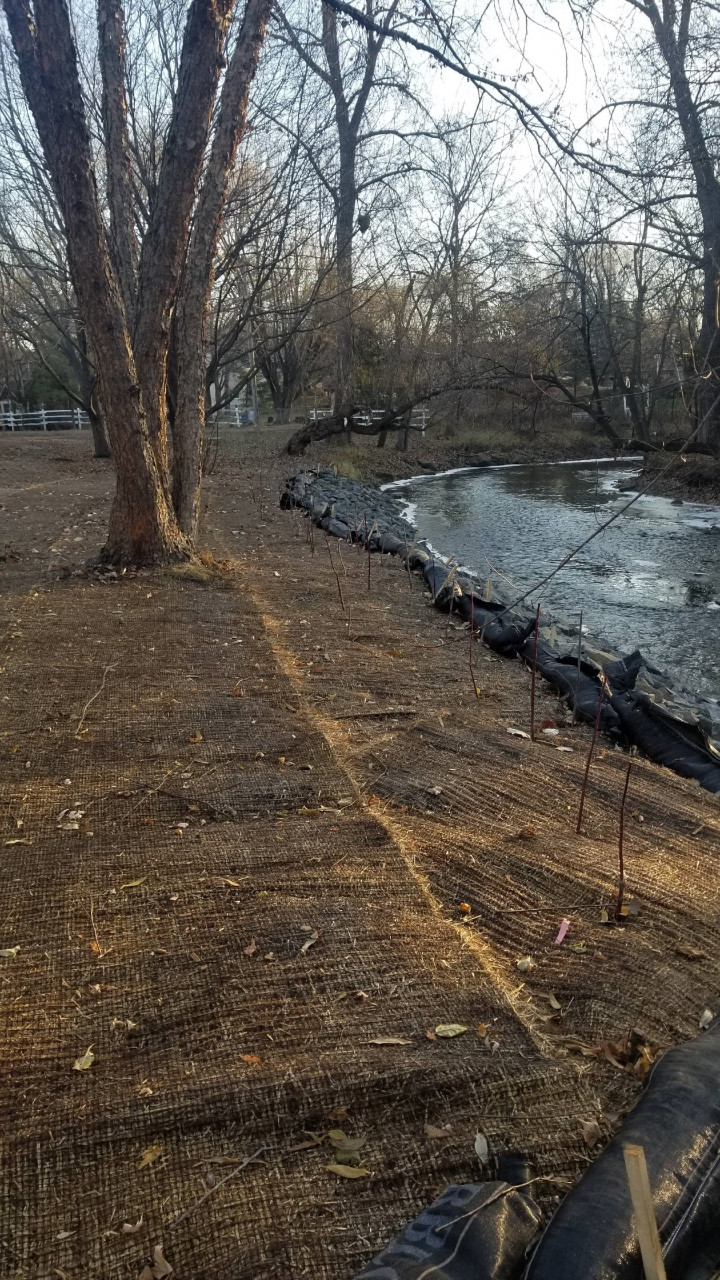Golden Lake is the jewel in the crown of the City of Circle Pines. Over the decades, clear water gave way to murk and algae. A focused effort over the last several years by many local partners and residents leveraging state funds has turned the lake around; enough so that Golden Lake is being removed from the Impaired Waters List.
At 57 acres, Golden Lake is relatively small, particularly compared to the watershed that drains to it of over 6500 acres. With so much water flowing in from such a large area, Golden Lake is considered a 'flow through' lake, with the water ending up in Rice Creek. Golden Lake essentially acts like a bathtub with the faucet always turned on and a drain always open. Enough water comes in to replace all of the water three times every couple years. This is why efforts to clean up the water, started by installing projects upstream in the watershed.
Working with the City of Blaine, the Rice Creek Watershed District and $88,950 from the Clean Water Fund, Anoka Conservation District retrofitted a stormwater treatment pond in Blaine with an iron-enhanced sand filter bench installed along the perimeter. Iron holds on tight to phosphorus enabling this small project to reduce phosphorus by 11% of the goal to meet State water quality standards. Completed in 2015 at Centennial Green Park, water now filters through the iron-enhanced sand filter before entering the ditch and making its way to Golden Lake. The success of this project inspired a larger effort a bit downstream.
With a $467,970 Clean Water Fund grant, the City of Circle Pines, Rice Creek Watershed District, and Anoka Conservation District hired WSB to design and oversee installation of a pump-controlled iron-enhanced sand filter basin near an existing stormwater pond on Circle Pines-owned property adjacent to Golden Lake. Completed in 2019, water is pumped from an existing pond to two iron-enhanced sand filter beds, before it reaches an outlet to the lake.The project was designed to remove 50 pounds/year of phosphorus entering the pond from Anoka County Ditch 53-62, which carries stormwater runoff from about 6,425 acres.
"Without the Clean Water Fund, neither of these projects would have gone in the ground. Typically, the financial hurdles are often the hardest to get over, and the Clean Water Fund provides a fantastic opportunity to bridge that gap," said Mitch Haustein, Anoka Conservation District Stormwater and Shoreland Specialist.
These projects alone would not have been enough. Groups like the Friends of Golden Lake have helped to spread the word about lawn care to reduce fertilizer and chemical inputs into the lake, stabilizing eroding shorelines, installing buffer plantings, and allowing rooted weeds to grow to help suck up the phosphorus so algae doesn't. Over the past eight years, RCWD monitoring data show phosphorus levels are down 20% to 50% compared with the longtime average dating back to 1976. "The lake is as healthy as it's been in decades – thanks to the ongoing efforts by many" per the Friends of Golden Lake at www.facebook.com/friendsofgoldenlake/. Let's keep working together to keep it that way! For more information contact Chris Lord, District Manager, at



